
How to Identify Ants in Perth?
What Are The Most Common Pest Ants In Perth, WA?
Insestations with ants in Perth, WA, are a far more significant issue than in other Australian cities like Sydney, Melbourne, or even Brisbane. While Brisbane first encountered the invasive Red Imported Fire Ants in 2001, Perth faces a unique challenge. Its sandy terrain provides an ideal environment for a variety of ant species, allowing them to thrive and cause problems with residents.
This problem is not just a nuisance; it is a major social, economic, and ecological battle. Many introduced ant species are aggressively competing with and attacking native species, affecting the local ecosystem. This pattern of invasive species threatening the balance isn’t limited to ants but extends to various animals, plants, and insects throughout the region.
Below, we’ll explore some of the most common ants that have become a problem for residents and businesses in Perth, Western Australia. Understanding these species can be the first step in managing and mitigating their impact on our lives and environment.
Argentine Ants in Perth
Specifically, as the name suggests, they are an introduced species that have dug into Perth WA. Argentine ants or Linepithema humile commonly, are found in the suburbs of Perth, WA, searching for food. In addition, they love damp, wet areas where you will find moisture. For example, behind a refrigerator would be the perfect place for these pests.
They love meat, sweets, bread, pet foods and crumbs in general. If you do not wipe down kitchen benches, you are asking for trouble.
What Do Argentine Ants Look Like?
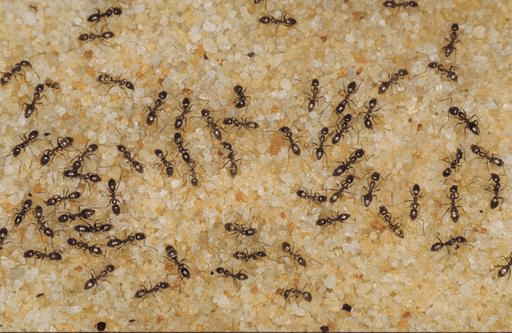
Primarily, these ants look like your typical cliché ant. Meaning they are darkish brown, about 2.6 to 3.3mm long. Usually, you can spot the worker ants easily by large trails of them. The trails, at times, can be three ants across. This is a good sign that you need to call A1 pest control Perth services. This is a sure sign you have an infestation. The good news is they have no stinger, and their bite is not painful.
Why Do I See So Many Argentine Ants?
Factually, these ants are excellent breeders. Uniquely, queens will live for several years, and the workers live for up to 1 year. In addition, you may have several queens in one colony. This is why they multiply fast and can infest your home quick. For example, if you put your hand in front of a trail, they will just run over it; this is unusual behaviour for ants.
What Is The History Of Argentine Ants In Perth, WA?
In essence, this ant knows how to survive and is fast to adapt to urban environments. Originating in South America, they are also prolific in South Africa and the USA. Argentine ants were first spotted in Albany in the early 1940s and quickly settled into Perth, WA. It is advised to use a professional pest control company like us to combat the situation.
What Impact Do Argentine Ants Have On The Perth Environment?
Unfortunately, Argentine ants have a bad effect on the ecology. They invade birds nests and the eggs. Furthermore, they destroy native fauna. They are exceptionally good at eliminating rival ants in their territory due to their sheer numbers. They attack commercial beehives and orchards. As a note, that is why you need an expert to rid you of the problem. Book now, and we can help.
Coastal Browns Or Big-Headed Ants?
To the point, coastal brown ants (Pheidole megacephala) are a major pest in Perth, WA, without a doubt. They hang around the Perth suburbs; most residents of Perth will have seen them at one time or another. You will see them on brickwork, which can sometimes destabilise or be seen on the lawns. They are another introduced species hailing from Africa.
Uniquely, they are known to form supercolonies. Meaning, interconnected nests join together, and each nest can have several queens. Coastal Browns have been known to take over acres of land. This means whole blocks of houses maybe be infested at any one time. If you think you have a problem, call us for the solution.
What Do Coastal Brown Ants Look Like?

Factually, there are two types of worker ants. Firstly, main worker ants are quite small, around 2mm–3mm in size. They are light brown ginger in colours with really shiny abdomens. In addition, there is the larger caste which is 3.5mm to 4.5mm in length. Thankfully, these ants are not defence soldiers and only take up 1% of the population. Primarily, they are there to chop up larger meals into smaller ones for the little ones to carry back.
How Do I Know If Coastal Browns Are On My Property?
Fundamentally, one way to know if you are dealing with coastal browns is to see small holes on the ground or lawn. In addition, you may see small mounds of dirt. Again, as mentioned, brickwork such as paving can be destabilised. Another sign is you may see plants drying out due to coastal browns. Lastly, pet food may be covered in ants. As a note, they are maybe hard to see at first.
Saying all of this, the best way is to call us the experts and we can identify them quickly.
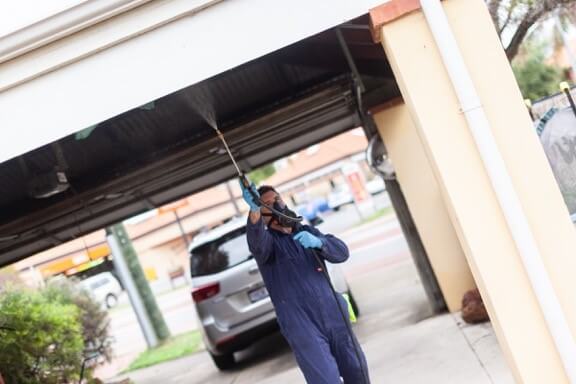
When Are Coastal Browns Most Active?
As a rule, Coastal Browns are most active in the late Summer, early Winter and Autumn. Mainly, they will still stay in the ground. Until the point when the population rises, this is when they head into properties. Therefore, causing a devasting effect, it is known that they eat meat and oil-based foods.
The coastal brown ant is very suited to urban areas and in fact thrives. Primarily, they love disturbed land such as housing development. This is another reason these ants have been such a nuisance in recent times.
Are Costal Browns A Threat To The Perth WA Environment?
Yes, as an introduced species, they will eliminate native species also because multiple colonies can act as one colony. In many instances, no other ants will survive their invading areas. Fundamentally, they can secure large areas of land and dominate.
Browsing Ants
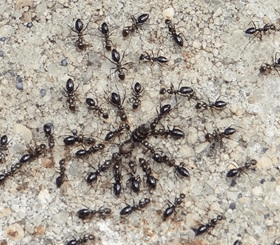
The Browing ant is not to be confused with the native Black House Ant of Australia. Originally, native to the south of Europe and loves the Mediterranean climates. Meaning, especially in the warmer months, Perth, WA, is an ideal hunting ground.
These ants have only lately been seen in Perth as recently as 2013 at the Perth Airport. Next, at a freight depot in Belmont, then Kewdale and now have been spotted in Bullsbrook. Therefore, swift eradication should be implemented for many reasons.
Furthermore, they have also been seen in Darwin and Brisbane. Suppose you are a resident of Brisbane, Darwin, or Perth. Then seek out local professional pest control services.
What Do Browsing Ants Look Like?
Generally, they are 3mm-4mm in length, and they are seen in massive numbers. They like the Coastal Brown, have multiple queens and form supercolonies. Meaning they take over food supplies and dominate their territory. In addition, you will notice them run around crazy if you disturb them.
As a rule, browsing ants feed on vegetation and suck the life out of plants. They are classed as a sap-sucking insect.
Why Is The Browsing Ant A threat To Western Australia?
Again, as mentioned, these ants will multiply like there is no tomorrow. Secondly, they will hunt and feast indoors, making them a residential nuisance both inside the home and in the garden. Thirdly, as mentioned, they suck and eat plants and general vegetation. Meaning they can kill native fauna and large amounts of crops, making them a literal threat to the multi-billion-dollar horticultural industry of western Australia.
Additionally, like most introduced species of any kind, they pose a threat to the delicate ecological balance in Australia. The government has declared war on this invasive pest.
Black House Ants
Specifically, Black House ants are native to Western Australia and commonly, they love to invade the homes of Perth residents. Suppose you live in Perth, WA; you most likely have come across these insects. Generally, you find them in the kitchen drawers, bathrooms, basement, or laundry. Also, you may find them in sheds garages.
Officially, they love feeding sweets, soft drinks and cordial, honeydew nectars and other insects. In addition, you are highly likely to find these ants nesting in the garbage or trash. Unusually, Black House Ants will build nests within your home. Primarily, you will find the nests in roofs, inside wall cavities and pot plants. In addition, you may find nests in refrigerators, computers, microwaves, and other electrical items.
Can Black House Ants Cause Damage?
Specifically, Black House Ants can spread diseases because of the way they work. As mentioned, these are scavenger ants. For example, if these ants crawl down the kitchen sink. Then they make their way back up into the kitchen drawers. Highly, there is a chance they may be putting salmonella on your cutlery. Of if nothing else, putting you and your family at risk.
In addition, you find them in bathrooms and laundry, which means, like cockroaches, traveling back and forth from the kitchen to the bathroom. Then this could be a real health risk problem. In essence, you may consider this ant as a very dirty insect no better than a cockroach.
As a rule, black house ants do not cause direct property damage. However, they are not pleasant to live with. If you have a nest or multiple nests, we urge you to seek expert pest control services.
What Do Black House Ants Look Like?
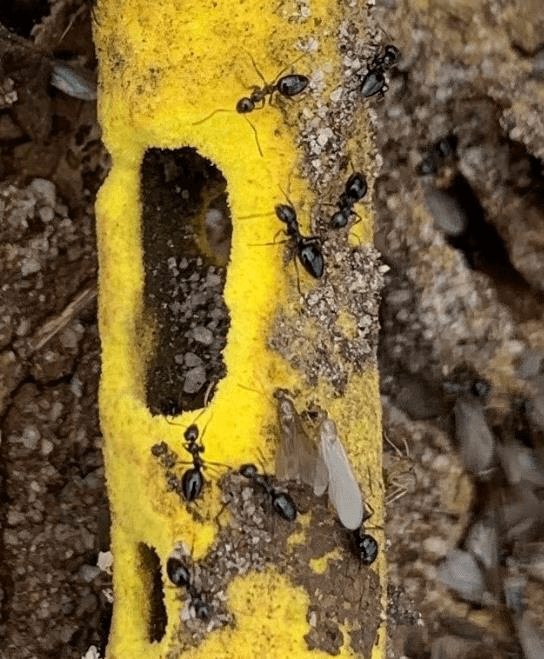
In general, black house ants (ochetellus glaber) are black in colour and shiny. They are around 2.5mm to 3mm in length. Luckily, this ant does not have a sting or bite harmful to humans. As mentioned, these guys are known as sweet ants or scavenger ants. Therefore, you will find them anywhere you may find food in your home.
If you believe you have a nest of black house ants, it is best to call local pest control. Although, there are some DIY methods, such as the use of Borax. In addition, fly spray directly onto the nest can, at times, work. However, these ants are stubborn, and if they know, your house is a source of food. It isn’t easy to be free of them, especially if they have multiple nests.
Red Imported Fire Ants
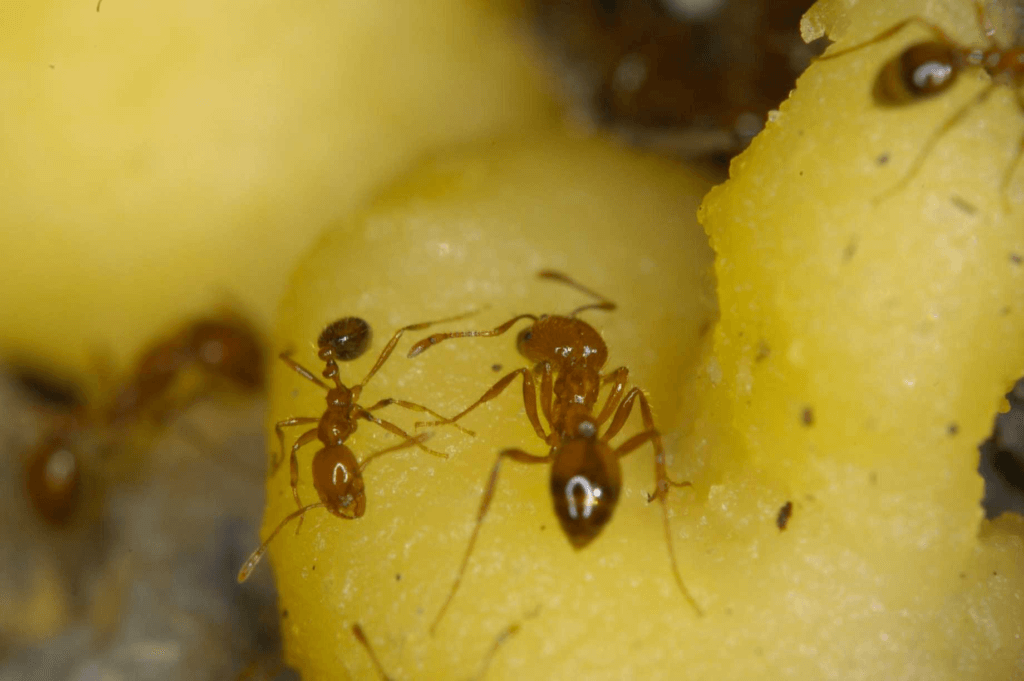
As the name may suggest, these ants are not insects you should mess around with. On a world scale, these ants terrorise urban residents and farmers. These are an imported species and were first seen in Brisbane, Australia, in 2001. In 2019, they were spotted at Fremantle ports, and a government eradication program is underway.
Factually, Red Imported Fire Ants, Solenopsis Invicta are a serious threat to Perth and Western Australia on quite a few levels. As mentioned, they are well and well and truly settled in South-East Queensland (Brisbane). It is believed they may have got into WA. Possibly, via pot plant transportation, turf, shipping containers or perhaps even beehives.
Not only is this ant species aggressive beyond belief. They, like other species, can produce multiple queens, therefore, forming supercolonies. This is scary stuff once you understand what the Red Imported Fire Ant is capable of.
What to Know About Imported Fire Ants?
Firstly, Red Imported Fire Ants or (RIFA) is native to Brazil. Specifically, to the area or state of Mata Grosso. In general, they are small in appearance ranging from 2mm to 6mm in length. NOTE – These ants are extremely dangerous and aggressive. They will attack in large numbers if the nest has been disturbed. On occasions, some humans can have extreme adverse chemical reactions to being attacked.
These ants sting very much like a wasp. Meaning, they are relentless in attack mode. Commonly, a pustulate on the site of the sting will develop. If you notice fluffed up soil about 40cm high and around 70cm across, you can identify them on your property. Usually, the nests will be found on the lawn or somewhere similar on the property. In addition, they can be found on sports ovals, schools, paddocks, or golf courses. Amazingly or uniquely, you may notice there are no distinct entry or exit holes. These are known as RIFA nests.
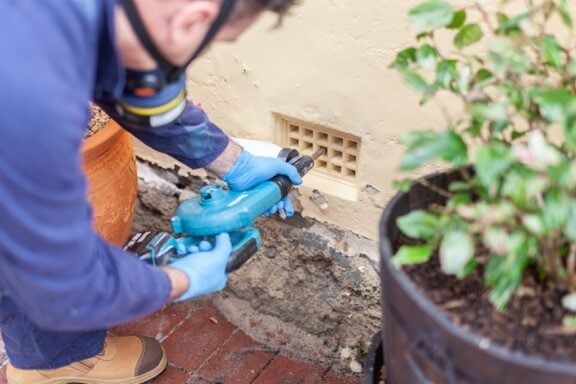
What Damage Or Health Effects Do Red Imported Fire Ants Cause?
As mentioned, many people can have life-threatening reactions to RIFA. Commonly, they enter residential premises. They are posing a high health risk to all family members, including pets. Keep in mind that if you are in an area prone to invasions, keep an eye on pets, especially if they are tied or penned up. If the animal is unable to run away, it can result in terrible effects. About household damage, when building RIFA nests, they extract so much soil they can collapse retaining walls and driveways.
As mentioned, Red Imported Fire Ants stings are extremely painful, even one ant. Also, when in battle mode, they attack like no other ant on the planet. Meaning they are tireless and relentless. For example, around 40 000 people in the USA will seek medical attention each year. Although rare, some people who react allergically may die. However, it’s not unusual to have permanent scarring or require a person to be hospitalised after an attack.
What Do Red Imported Fire Ants Feed On?
Fundamentally, Red Imported Fire Ants are omnivorous. Meaning, they feed on meat such as dead animals, other insects that eat plants. Also, the workers feed on seeds and plants. It is recorded that these ants are highly attracted to cotton, incredibly young corn, and passion vine.
In addition, RIFA will chew on electrical wires, making buildings fire-prone. They will chew electrical insulation. Meaning, they wreak havoc in electrical motors, air-cons, phone exchanges, signal boxes, and similar devices. In essence, they, like other ants, are scavengers. However, these ants are super dangerous while doing their work.
Are Imported Fire Ants A Danger To The Ecological Balance In Australia?
When it comes to the environment, Imported Fire Ants pose a major threat on so many levels. Not only are they highly dangerous to humans. They are a direct threat to the ecological balance of Perth and Western Australia. As mentioned, Red Imported Fire Ants are one of the most if not the most aggressive ant species on the planet. Meaning they attack native wildlife on a grand scale.
Furthermore, they kill native plants and fauna. Going further, they eliminate native insects, such as native bees and native wasps. As one example, these insects pollinate native orchids. Therefore, RIFA prevents the pollination of native orchids and put them in danger of extinction. This is only one example of the ecological damage RIFA can do.
Factually, where RIFA are prolific, they have wiped out half of the snakes, turtles, various native species, and native fauna. In a nutshell, the answer is they are devasting to Western Australia or anywhere else they are found.
What Impact Can Red Imported Fire Ants Have On Agricultural?
Unfortunately, Red Imported Fire Ants are devasting to the Perth or even Western Australian agriculture industry. In general, this affects the economy overall. To give you an idea, incredibly, these predators cause 6 billion USD a year in damage in the USA. Keeping in mind, Americans have been dealing with RIFA since the 1940s.
Perth residents or Western Australians are new to these pests. For example, they attack potatoes and orchards; they carry seeds of all shapes and sizes back to their nest. In addition, they love germinating seeds, therefore, stopping plants from growing. As mentioned, they eat fruit especially developing fruit and the actual fruit buds. Saying all this, they leave insects like aphids and scale bugs alone. Therefore, needing heavy-duty pesticides to get rid of the insects.
Furthermore, they take over hectares of land, leaving it unusable. Going further, they prevent livestock from feeding. Attacking animal pens and feed troughs leaving devasting effects. They even interfere in the cutting of hay; it never ends. In some cases, it’s been found to have 400 nests per hectare of land. Lastly, they are well known for stopping high-density production systems.
Lastly, they have the potential to cost billions of dollars a year to the WA economy. In summary, if you come across Red Imported Fire Ants in Perth, WA. Contact A1 Pest Control Perth!
What To Do If You Have An Problem With Ants in Perth?
If you read the information here, you can probably see that dealing with ants is no easy. It also depends on what species you are dealing with. In general, if you believe your property or workplace is being overtaken by ants. We highly advise not on taking this on a DIY project. Call A1 Pest Control Perth to deal with your ant problems and find solutions.
In essence, ants have evolved over thousands or perhaps millions of years to the stage they are at now. Once your home or workspace is a source of food or shelter for them, ants will show no mercy in getting what they want. Pretty much nothing will stand in their way, and this seems to be across the board.
For example, you come across an ant, and you are not sure what the species is. Feel free to take a photo and send it over to us. We will be happy to take a look and advise. As documented, ants in Perth, WA, is becoming more and more of a rising issue. One reason that ants are on the increase as opposed to other states. Perth and surrounding areas are sandy and have long, hot summers, the perfect storm when breeding ants.
Call A1 Pest Control Perth for all ant control issues.
